
Learning the fundamentals of overclock will show you how to to unlock the complete potential of your gaming rig. There are myriad methods you possibly can enhance the efficiency of your PC, however most of them are going to value you. Learning the fundamentals of overclocking although means squeezing the utmost efficiency out of your current elements, in your favorite video games, with out spending a penny.
Tweaking your GPU’s clockspeed can enhance even the best budget graphics card.
So, studying the fundamentals of overclock your CPU or GPU could make the distinction between unplayable and playable, however what truly is overclocking?
If you’ve ever seen any photos or movies of overclocking occasions you’ll have seen liquid nitrogen splashed liberally throughout the ground, pouring clouds of vapour up into the air and serious-looking guys (it’s all the time guys) in brand’d t-shirts both high-fiving one another or frantically prodding at keyboards and unusual contraptions atop check benches. It can be very straightforward to take a look at all that and conclude overclocking is one thing greatest left to the consultants.
But that’s probably not overclocking, at the least not the true spirit of overclocking. It’s not some darkish artwork, it’s not some chase for ever-higher, ever extra meaningless index numbers and it’s not some aggressive sport. Overclocking is a approach for us to squeeze as a lot efficiency as we will from the elements in our PCs after we can’t afford to exit and purchase one thing newer or one thing sooner.
PCs and their constituent elements are costly, however technological progress waits for no man and so this yr’s high-flyers can change into next-year’s poor cousins extremely rapidly. Even the GTX 1080 Ti will someday look pedestrian in opposition to a mid-range GPU of a more moderen graphics era.
But overclocking is a approach to hold your ageing rig in contact with the newest video games and run them at a good body charge – and all with out opening your pockets.
Where as soon as it was a query of changing crystals, swapping silicon or drawing traces in your CPU with a pencil (honest) now you simply want some overclocking software program, some BIOS-fu and somewhat little bit of persistence.
Super-serious disclaimer time: Overclocking is way much less harmful to the well being of your elements than it was once – with failsafes constructed into most fashionable silicon – however you’ll nonetheless be working your exterior its formally rated parameters, placing it in danger. That means you’ll doubtless invalidate any guarantee your would possibly nonetheless have and there’s a slight threat that any additional stress would possibly simply push it over the sting and brick it. That’s why traditionally overclocking is completed on getting older elements. You have been warned…
Right, now the official warning stuff is out of the best way let’s get all the way down to enterprise. The enterprise of constructing your gaming PC much more superior, beginning with overlock your graphics card.
How to overclock – GPU
1. Overclocking software program
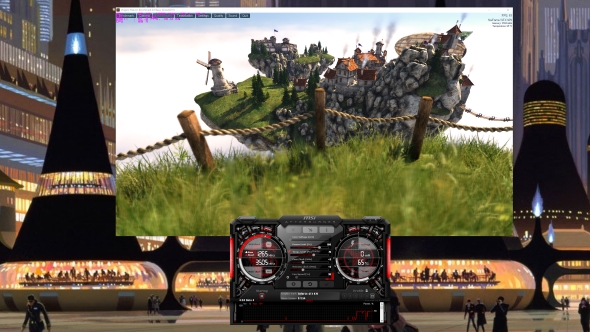
The first step everytime you wish to do something to your PC is to verify it’s fully updated. That must both flag up any gremlins lurking in your system or assist eliminate them earlier than they change into a difficulty. Check Windows Update to get your OS updated and guarantee you could have the newest drivers to your graphics card, whether or not it is an AMD or Nvidia GPU.
Next you’ll wish to seize your overclocking software program. My private selection for perking up your graphics card is MSI’s Afterburner software program, and its newest launch now consists of monitoring for DirectX 12 titles too. It makes use of the traditional Rivatuner backend (like Asus’ GPU Tweak and EVGA’s Precision apps), however comes with an easy-to-use interface and a helpful on-screen show to maintain monitor of issues in-game. It’s a free obtain, takes just a few minutes to put in and can be utilized on any GPU, not simply these from MSI.
As properly because the software program for enacting any overclock you wish to obtain you need to get your self some benchmarking purposes too. Have a glance in your Steam library, chances are you’ll discover among the video games you already personal have built-in benchmarks, I imply, everybody’s received a duplicate of GTA V proper? But, whereas video games are nice for supplying you with a tangible earlier than and after shot of your PC’s efficiency, they’re a bit awkward to make use of whenever you’re looking for the boundaries of your .
I’d counsel downloading the Unigine Heaven benchmark. It’s a GPU-intensive 3D rendering check which is able to stress your card with a steady loop you possibly can run in a window in your desktop. And it appears to be like kinda purty too…
2. Benchmark baseline efficiency

So you possibly can truly inform what you’ve got achieved by means of your overclocking efforts you should get some baseline efficiency numbers for a way your rig at present performs. Benchmarking is a moderately dry, tedious course of (welcome to my world), however it’s going to help you really feel all heat and fuzzy after you’ve nailed down your additional GPU efficiency as a result of you possibly can see in black and white simply what all that overclocking effort has afforded you.
Grab one among your favorite video games with a built-in benchmark – we use the likes of GTA V, the Total War video games, Shadow of Mordor, Hitman and the newest Tomb Raider – after which run the check (normally discovered within the graphics choices) at your present settings, noting down the ultimate common and minimal body charge scores. It’s additionally price benchmarking the Heaven check at your monitor’s native decision too (hit F9 and sit again). You might additionally obtain the free version of 3DMark and run the essential FireStrike check to get a dependable index rating.
three. Fun with frequencies
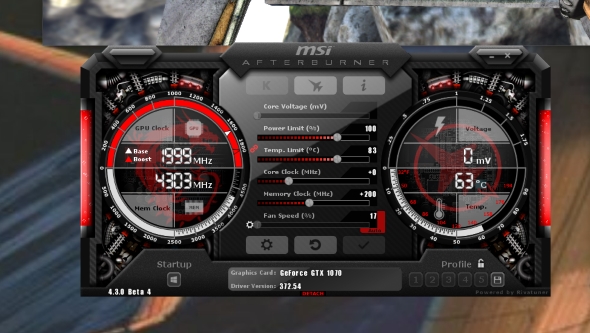
I can’t stress this sufficient – be affected person. That’s the important thing to getting probably the most out of your GPU with the kind of primary overclocking we’re taking a look at right here. You’re impossible to do any harm to your graphics card whilst you’re testing its limits, however should you go in heavy-handed, pushing the clocks up as excessive because the sliders enable, the minimal dangers are positively elevated.
First, boot up Afterburner and ensure the little Windows brand isn’t lit up – clicking that button ensures the present boosted settings are utilized when the system boots up. You don’t need that taking place whenever you’re looking for the boundaries, solely whenever you’re certain the system is steady.
Next, boot up Heaven in a window, one which’s sufficiently small so you possibly can view and entry the Afterburner management panel whereas Heaven is looping by means of its floating medieval village surroundings. On a 1080p display, run it at 720p, and 1080p on a 1440p or 4K panel.
Now you’re prepared to begin tweaking and the most effective place to begin is with the reminiscence clocks. Start shifting the reminiscence slider to the best in 5-10MHz increments, hitting the tick button to use the increase every time. After every step examine the looping Heaven run for visible artifacts showing on-screen. Memory glitches will manifest themselves as both strong blocks or blobs of colors or pin-sharp stars. Keep pushing the reminiscence slider up in small increments till you begin to see these telltale indicators of failing reminiscence…or till the cardboard or system crashes.
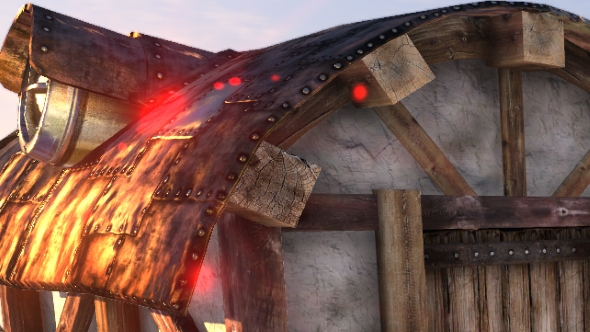
Once you get to that stage it’s time to dial again the clockspeed by both one or two steps, apply the brand new reminiscence clock and go away Heaven working for an extended interval to verify it stays steady on the new velocity. If you see extra reminiscence artifacts drop down one other 5-10MHz step and check once more.
Now you’ve discovered the reminiscence limits observe down the steady clockspeed offset and reset the cardboard to its default settings.
four. GPU overclocking
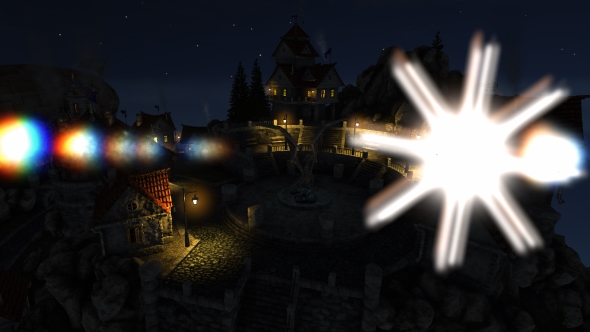
This is the place the true performance-changing stuff goes down, and likewise the place you’re going to begin producing probably the most warmth. Before you begin upping the GPU clockspeed itself push the ability restrict slider as much as max – permitting the graphics card to ship extra energy to the silicon if it will possibly – and likewise push up the temperature restrict somewhat increased to account for the elevated warmth era.
Using the identical course of we used when overclocking the video reminiscence, push the GPU clockspeed up by 5-10MHz increments, checking the sport window for artifacts as you apply every step change.
Processor artifacts manifest themselves in several methods to reminiscence points. Keep an eye fixed out for pixel-sized dots of various colors showing across the display, random shards of color or shiny, colored fullscreen flashes. As quickly as you see something like that it’s time to dial again the GPU clockspeed in the identical approach as you probably did with the reminiscence to seek out the steady boosted clockspeed.
5. The full GPU overclocking bundle
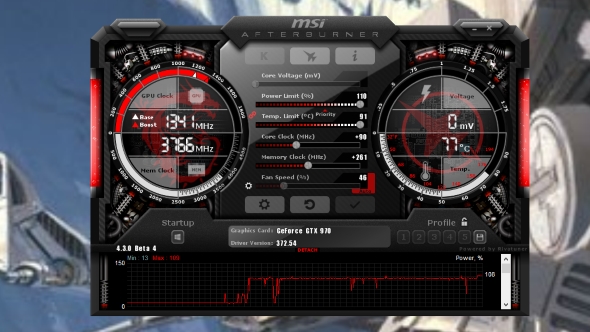
Now you wish to see how issues look with each the GPU and reminiscence clocks set to the height ranges you found individually. Don’t be stunned if placing each the sliders as much as the place you discovered they operated stably earlier now ends in a number of artifacts or crashes. If that occurs (and it in all probability will) pay attention to whether or not the glitches you see relate to both GPU or VRAM and knock again the related slider by one 5MHz notch.
If you simply get a system crash, however, merely reboot and set each reminiscence and processors speeds again one step and check once more. When you’re feeling assured about your settings it’s time to emphasize check.
6. Test and check once more

Close down Heaven in windowed type and restart it fullscreen at your native decision and go away it looping for a very good ten minutes to verify it stays absolutely steady at your new clocks. When you’re constructive it’s steady hit F9 to benchmark and see what efficiency improve your efforts have afforded you. Now replicate your earlier gaming and 3DMark checks to see what else you’ve gained.
Finally, hit that little Windows brand on Afterburner and light-weight it up so that each time you boot you’re working at your newly found, overclocked settings.
7. It’s not as quick as I’d hoped…
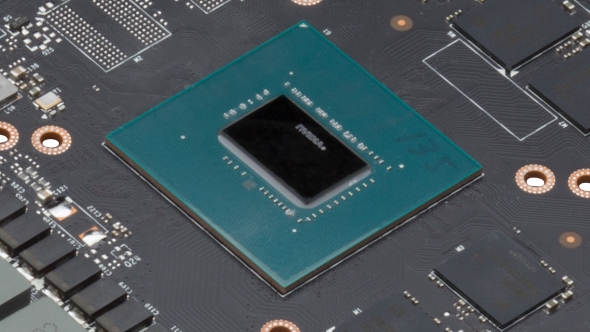
Not all graphics playing cards are created equal and neither are the chips inside them. You can’t be assured of a specific overclock (or certainly any overclock in any respect) as each GPU may have a distinct restrict due to vagaries within the manufacturing course of. We’ve additionally heard of points with later GTX 1070 cards, using Micron instead of Samsung memory, that limits their reminiscence overclocking efficiency in contrast with the unique reminiscence modules of the Founders Editions.
You would possibly get fortunate and discover your GPU will increase like a beast, equally you won’t be capable of get a lot additional efficiency in any respect, however as sure unintended horse-flesh suppliers are wont to say: each little helps.
There are different issues you are able to do to assist, nonetheless. If your card is a reference model, utilizing both a typical Nvidia or AMD cooler design, then you should buy comparatively low-cost third-party coolers to interchange them and probably ship increased overclocking efficiency. Corsair even provide adapters so you possibly can connect one among their closed-loop CPU water-coolers to your graphics card, although that’s possibly going somewhat too far should you’re simply making an attempt to eek out one other few months of gaming out of your getting older GPU.
eight. AMD WattMan
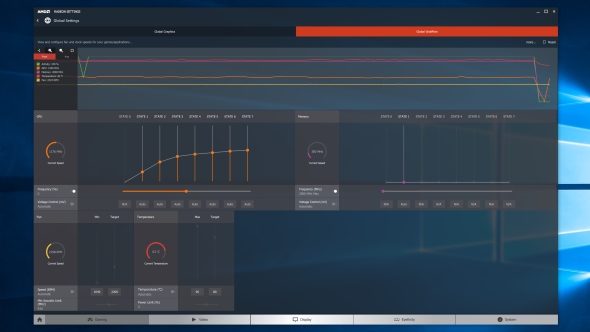
Using Afterburner, or different Rivatuner-based purposes, isn’t the one choice. With AMD Radeon playing cards you possibly can merely use the brand new WattMan instrument which now comes as a part of the Radeon Settings driver software program.
It’s a devoted choice for contemporary AMD playing cards and lets you do per-application overclocking for particular person video games. Below the newest 400-series playing cards you will not have full entry to all the pieces that WattMan can provide (because of Danteska for pointing that out), although you’ll nonetheless be capable of play with some sliders.
The overclocking course of is much like that which I detailed earlier – patiently pushing up clockspeeds whereas checking Heaven in a window – however there are a number of barely totally different steps. First you should increase the minimal and goal fan speeds, then change from auto to handbook and improve the temperature targets. Again although you have to to push the ability restrict to most earlier than you tweak the clocks.
For the reminiscence you should increase ‘State 1’ in small increments and hit apply to examine stability whereas the GPU slider must be raised in zero.5% steps as an alternative of the 5-10MHz jumps we utilized in Afterburner.
Once extra although it’s all about persistence and vigilance.
How to overclock – CPU
1. Prep work

Overclocking your processor is a barely totally different bag of chips to boosting the efficiency of your GPU, although the essential ideas stay the identical: be affected person and take issues regular.
There is one different factor to recollect and that’s to choose your battles. Not each processor may be overclocked anymore. Intel put the brakes on that some time again by locking down the clockspeed multipliers on all however their most costly SKUs. You want to verify your CPU has an unlocked multiplier to have the ability to publish severe efficiency boosts. For Intel meaning choosing a Ok-series chip and for AMD a Black Edition half – hit Win+Pause/Break keys collectively to show what’s in your present rig.
Check out our information to the best CPUs for gaming for our tackle the highest processors round proper now. They simply occur to even be those which can be most comfy with having the clocks tweaked too…
You’ll additionally want another software program that can assist you out, however as soon as extra it’s all out there without cost. First you’ll want extra monitoring software program and I’d counsel choosing out CPU-Z to control the real-time CPU clockspeed and multipliers and likewise Real Temp to maintain monitor of the temperatures contained in the processor bundle.
The easiest CPU benchmarking instrument is Cinebench; it’s a multi-threaded processor-based rendering check which is able to stress your silicon and spit out an index rating on the finish to assist gauge relative efficiency. Finally obtain Prime95 to emphasize check your CPU when you’re proud of the ultimate clockspeed.
You may also obtain Intel and AMD-based overclocking software program if you wish to run all the pieces from the protection of Windows, utilizing both Intel XTU or AMD OverDrive. AMD’s new Ryzen CPUs even have their very personal Ryzen Master software program particularly designed for the brand new chips.
But personally I discover it simply as straightforward to do all the pieces from inside the old-school confines of your motherboard’s BIOS. And as a result of it’s principally keyboard-based you possibly can fake you’re like some hacker out of a mid-90s TV present.
2. Stay contemporary, keep frosty
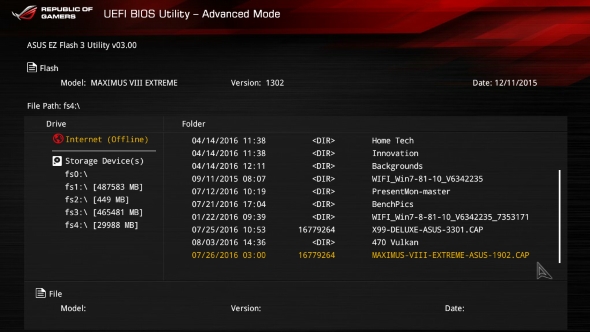
Once once more you should make sure that your PC is absolutely updated. That doesn’t simply imply Windows replace and basic driver stuff, you additionally wish to make sure that your motherboard BIOS is the newest firmware. To do that you’ll want to seek out out the precise make and mannequin of your present motherboard in addition to what BIOS model you’re at present working. Handily the CPU-Z app you’ve simply downloaded will assist should you don’t know off the highest of your head.
Boot up CPU-Z and click on the Mainboard tab throughout the highest. In the display which pops up would be the producer and mannequin of your board in addition to what BIOS model is at present put in. Armed with this data you possibly can head off to the producer’s web site, seek for your board and obtain the newest firmware BIOS replace.
It’s not price messing round right here – you should discover the EXACT match between BIOS and board. Simply downloading one which appears to be like about proper gained’t be sufficient. Chances are the BIOS will reject it, however at worst it might brick your motherboard fully. Beware. Once downloaded, unzip the BIOS replace to a USB stick and reboot together with your pendrive in place.
Hitting both F2 or Del when the PC POST display seems (earlier than the Windows loading display masses up) will take you into your BIOS display. From there you’ll doubtless have to enter the Tools tab. What BIOS you see will differ on a manufacturer-to-manufacturer foundation, however they’re all broadly related. You must discover a BIOS replace utility which is able to take your downloaded firmware replace and information you thru the method.
three. Completely computerized
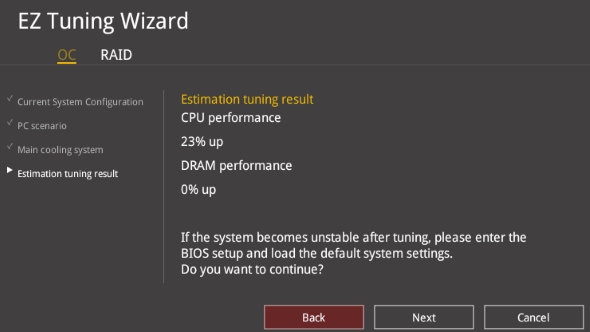
Once your BIOS is up to date you’ll wish to reboot again into it from contemporary and discover the choice to load the optimised settings. This is principally like a manufacturing unit reset to your motherboard, however shall be tied to the newest firmware you’ve simply put in so it’s price doing earlier than you begin something. Check the boot settings afterwards to verify it hasn’t modified which of your storage drives the PC boots from.
You might also discover your BIOS has a helpful auto overclocking operate – lots of the fashionable boards will include such issues. They can, nonetheless, be a bit hit or miss, nevertheless it’s price giving it a go at first to see what your motherboard can do by itself. If nothing else it’d offer you a greater platform to proceed overclocking from manually.
four. Long multiplication
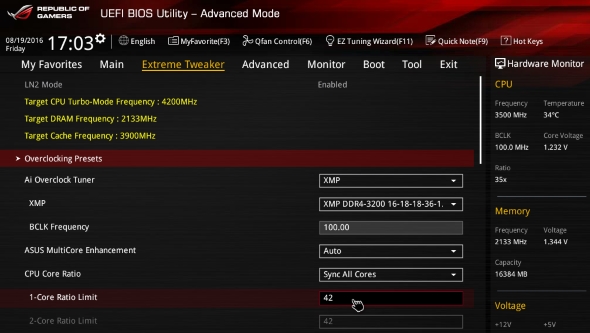
Your processor’s clockspeed is labored out by multiplying the baseclock (BCLK) by the CPU multiplier. The BCLK will doubtless be set at 100MHz by default, so for a Core i5 6600Ok, for instance, the multiplier shall be set at 35 out of the field producing a last clockspeed of three.5GHz.
Boosting your CPU’s clockspeed then is just a matter of stepping the processor’s clockspeed multiplier up by one, testing whether or not the machine nonetheless boots after which working a fast Cinebench check to examine stability. You might want to set the CPU multiplier/ratio setting to Manual/Sync All Cores and enter the specified quantity. You ought to then see a calculation of the ultimate clockspeed someplace on the web page. Then save the settings and restart your machine, booting into Windows.
Once in your Windows desktop begin up CPU-Z and Real Temp then run the CPU check in Cinebench to verify your processor’s working stably. Keep an eye fixed on CPU-Z to examine whether or not the chip is working on the anticipated velocity and examine the processor’s temperature in Real Temp to verify it’s not working insanely sizzling.
Then, if all the pieces works because it ought to, reboot into the BIOS and rinse and repeat till both the machine refuses as well (why, hey Mrs. Bluescreen of Death, how good to see you…) or it falls over half approach by means of your stability benchmark.
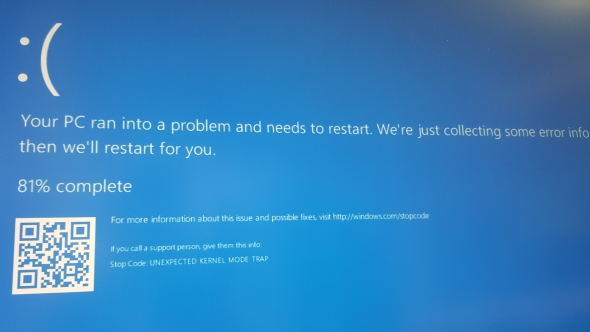
When that occurs merely reboot into your BIOS once more to vary the settings. Chances are the POST display will lock whenever you restart, with a message saying ‘overclocking has failed’ and instantly provide the choice to leap into the BIOS display. From right here knock the multiplier down by one, save and reboot testing for stability in Windows.
If you get right into a horrible boot cycle the place your machine freezes earlier than you will get into your BIOS don’t panic, all isn’t misplaced. You might must delve into your machine and get a have a look at your motherboard although. You might must laborious reset your motherboard’s BIOS, however the technique can differ from manufacturer-to-manufacturer – Google is your good friend right here. It will both be somewhat button on the again panel of your board (should you’re fortunate) a button on the motherboard inside your case (should you’re not fairly so fortunate) or a jumper change you should quick on the PCB itself (should you smashed a mirror over a black cat).
four. Double examine
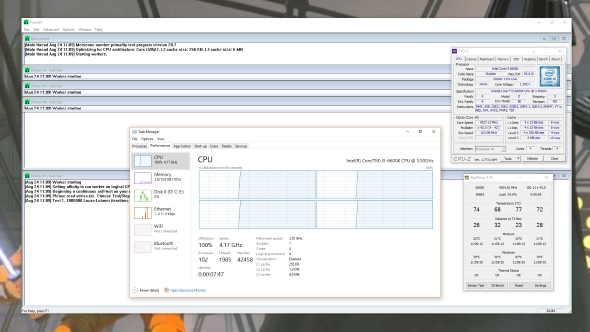
When you’ve reached the boundaries of what boosting the multiplier can get you then it’s time to verify your machine remains to be 100% steady. Prime95 is a good stress-testing instrument for CPUs – in case your overclock can survive 10 minutes working Prime95 chances are high your new clockspeed is fairly damned strong. Boot up each CPU-Z (to examine the clockspeed stays fixed) and Prime95, deciding on the small FFTs when the torture check display pops up.
Run the torture check for at the least 10 minutes after which, whenever you’re proud of the chip’s stability, you have to to verify to click on the Test tab within the Prime95 window and cease the check manually. Just shutting the window down gained’t essentially do the job.
Now you should have a rock-solid CPU overclock, hopefully at the least boosting the minimal body charges in-game and probably releasing up somewhat additional efficiency out of your graphics playing cards as a complete.
5. There should be extra to it than that….

Of course there may be if you wish to go even additional together with your costly silicon. If you wish to get elbow deep into CPU overclocking you can begin messing round with the voltages and baseclock settings, however that approach lies larger long run threat to your and much more intricate fiddling in varied BIOS settings too. Besides, fidgeting with voltages additionally will increase the warmth output and will solely get you somewhat increased clockspeed. You may also improve the BCLK of some processors too, however doing that’s extra susceptible to failure too.
You can although enhance the cooling of your CPU and your PC as a complete which can assist web you the next last clockspeed. If you’re working the identical inventory cooler which got here boxed up together with your processor then your chip is prone to be getting extra toasty than it wants. A great third-party cooler may be surprisingly low-cost and might help enhance overclocking scores by a very good good distance, in addition to be sure that an overclocked CPU retains on trucking with out falling over a short while down the road.
Had any luck with overclocking? What’s your proudest silicon-based achievement? Let us know within the feedback beneath.
Source

